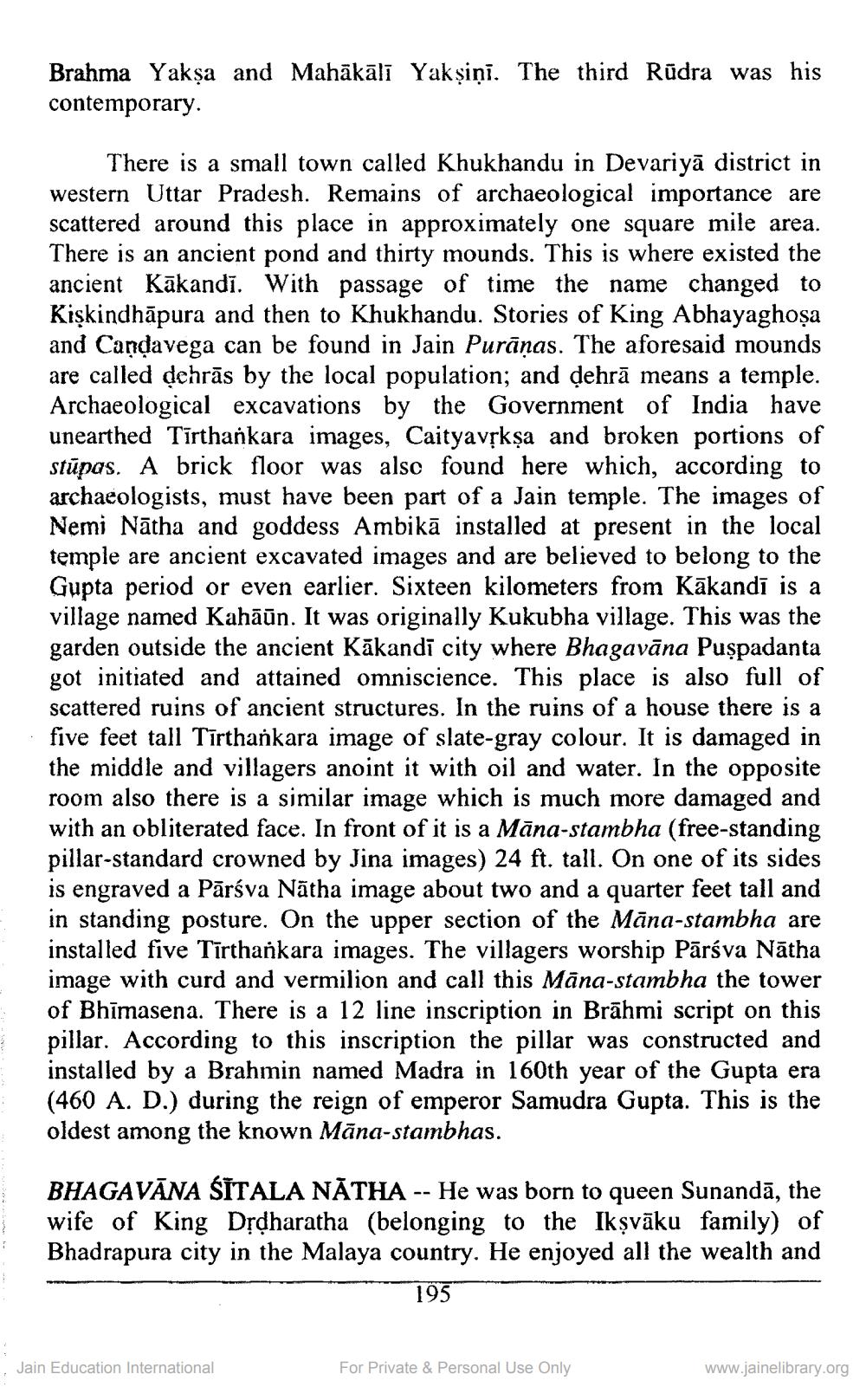________________
Brahma Yaksa and Mahäkālī Yakşiņi. The third Rūdra was his contemporary
There is a small town called Khukhandu in Devariyā district in western Uttar Pradesh. Remains of archaeological importance are scattered around this place in approximately one square mile area. There is an ancient pond and thirty mounds. This is where existed the ancient Kākandi. With passage of time the name changed to Kişkindhāpura and then to Khukhandu. Stories of King Abhayaghosa and Candavega can be found in Jain Purāņas. The aforesaid mounds are called dehrās by the local population; and dehrā means a temple. Archaeological excavations by the Government of India have unearthed Tīrthankara images, Caityavşkșa and broken portions of stūpas. A brick floor was also found here which, according to archaeologists, must have been part of a Jain temple. The images of Nemi Nātha and goddess Ambikā installed at present in the local temple are ancient excavated images and are believed to belong to the Gupta period or even earlier. Sixteen kilometers from Kākandī is a village named Kahāūn. It was originally Kukubha village. This was the garden outside the ancient Kākandi city where Bhagavāna Puşpadanta got initiated and attained omniscience. This place is also full of scattered ruins of ancient structures. In the ruins of a house there is a five feet tall Tīrthankara image of slate-gray colour. It is damaged in the middle and villagers anoint it with oil and water. In the opposite room also there is a similar image which is much more damaged and with an obliterated face. In front of it is a Māna-stambha (free-standing pillar-standard crowned by Jina images) 24 ft. tall. On one of its sides is engraved a Pārsva Nātha image about two and a quarter feet tall and in standing posture. On the upper section of the Māna-stambha are installed five Tīrthankara images. The villagers worship Pārsva Nātha image with curd and vermilion and call this Māna-stambha the tower of Bhīmasena. There is a 12 line inscription in Brāhmi script on this pillar. According to this inscription the pillar was constructed and installed by a Brahmin named Madra in 160th year of the Gupta era (460 A. D.) during the reign of emperor Samudra Gupta. This is the oldest among the known Māna-stambhas.
BHAGAVĀNA ŚĪTALA NĂTHA -- He was born to queen Sunandā, the wife of King Dşdharatha (belonging to the Ikşvāku family) of Bhadrapura city in the Malaya country. He enjoyed all the wealth and
195
Jain Education International
For Private & Personal Use Only
www.jainelibrary.org




